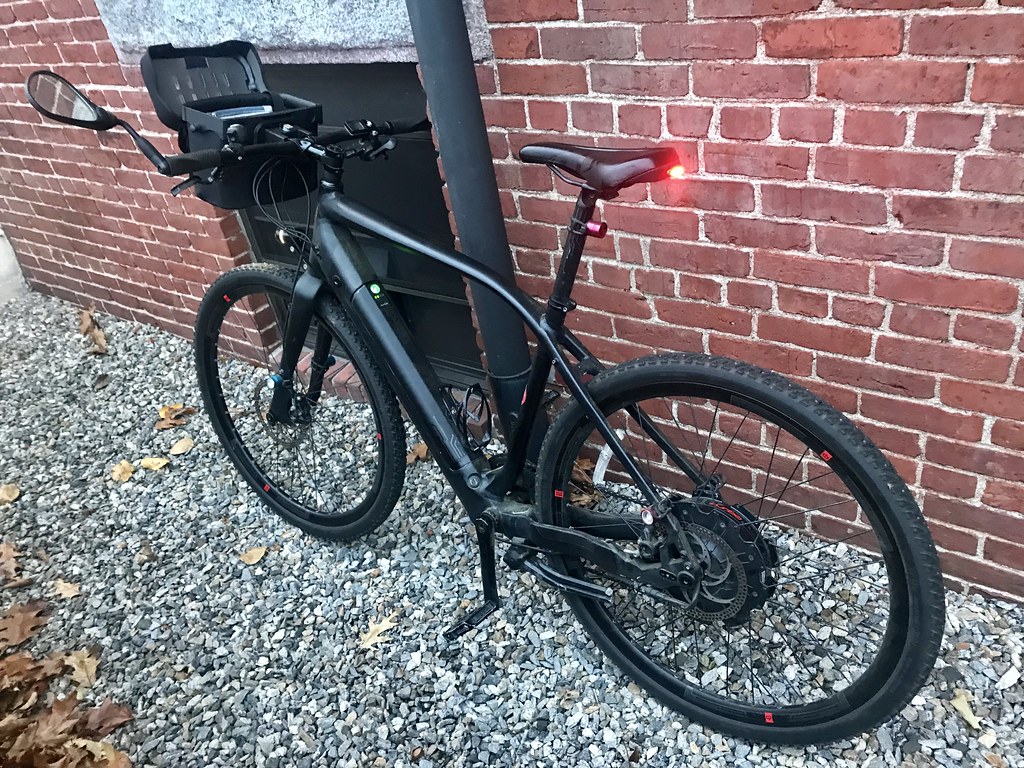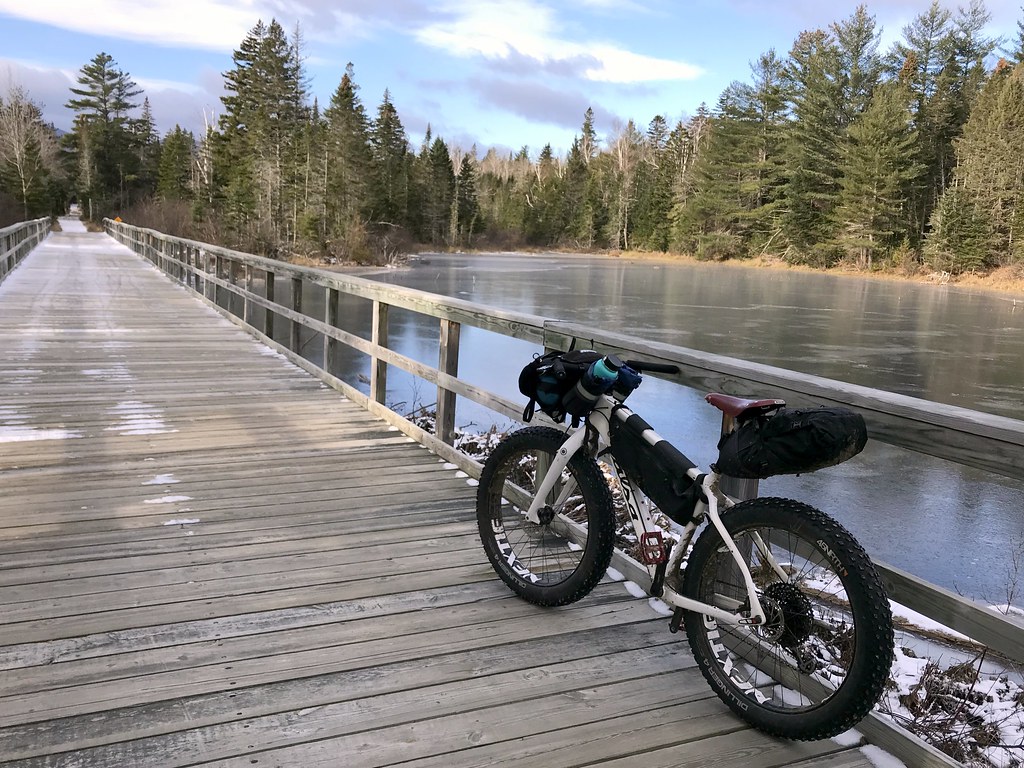Upgrade your bike
There are a number of upgrades you can make to your bike that will keep you safe, dry and in good working condition during the winter.
Brakes
If you have rim brakes, before winter is a good time to check that the rubber material that makes up the pad is still pliable. This will get worse in colder temps. Keeping your rims dry and clean can be difficult in the winter and may cause them to become less effective. Cleaning your rims after every ride is advisable.
If you have Disc Brakes, mechanical are the best in the winter. DOT based brake fluid hydraulic brakes are next best and mineral oil based hydraulics will suffer the most in very cold sub zero (F) temps. If you want to read about what Bike/Component manufacturers say about brake performance in cold weather, read here:
http://www.velonews.com/2015/01/bikes-and-tech/technical-faq/technical-faq-disc-brakes-cold-weather_358172
Fenders
Fenders are often the first things people cite when talking about winter bike upgrades. If you have good waterproof outer layers, you could probably forgo this feature if you don’t mind having a streak of mud and dirt up your back. That being said, they are very good upgrades which will keep water and dirt off you—always a big plus.
Pedals
If you have pedals with large surface areas, these will tend to get caked with snow. Also consider your winter riding shoes/boots and upgrade to pedals that increase your grip when wet and snowy.
Lights
My recommendations for lights, besides being bright enough to see at least half a mile away, is to get two front and two rear. One blinking and one steady on. Not only do two lights help with being able to use multiple modes simultaneously, but two lights help with depth perception for drivers. It is much easier to see the shape of an object with two points of reference than one. The farther apart they are, the easier it will be to visualize your shape as a bicycle. This is really important on snowy days or when drivers are less than stellar at removing ice and fog from their windshields.
Lights should be used during the day and night. Especially on cloudy days. The farther back a car sees you, the better off you’ll be.
Rear View Mirror
Get a mirror! Knowing what’s creeping up behind you, especially on roads, is critical for reaction time. Keep something in your pocket to wipe it off occasionally too. Especially during active snowing days.
Here is a perfect example of where having a rear view mirror helps you make navigation decisions on-the-fly when dangerous conditions approach. This is not the time to be swiveling your head behind you and forward. I had to make quick determination where traffic was around me, slow to fit in a gap between the cars and pay attention to their approach while avoiding obstacles in front of me.
Tires
99% of bike tires are not winter tires. Regular bicycle tires typically use very hard rubber. This is great for wear and flat protection, but they can become ice skates when cold. Winter tires have softer rubber and some even have metal studs for handling ice. If you live in an area the gets below freezing, studded tires are a must. Even days when the roads look clear, black ice can loom in the most unsuspecting of places.
Studded tires are not snow tires, they are ice traction tires. Studs will not help grip snow unless it is very firmly packed and not full of road salt.
When buying studded tires, check to see what material the studs are made of. Studs will contact lots of road salt so steel studs will quickly rust. My preference is aluminum/carbide (aluminum base with carbide teeth). Studs also have a tendency to fall out. Most studded tire manufacturers will sell replacement studs. They are often easier to replace with a special tool.
Fat Tires
Fat bikes are the only true snow bikes. Regular skinny tire bikes tend to do horribly on snow, even with winter tires. Especially on powdery snow or greasy snow (see road conditions later).
Fatter tires are intended to ride on top of snow. Skinnier tires need to cut through the snow to reach a hard surface. The deeper or more sticky the snow is, the harder it is for skinny tire bikes to travel.
The downsides to fat bikes are the added rolling resistance of bigger tires. This means you will need to exert more work to achieve the same speed. Bigger tires also tends to mean greater expense when pricing out studded tires, etc.
Flat Repair Kit
If you don’t have someone to pick you up, easy access to public transportation, etc. you should carry a flat repair kit on every ride. This includes a mini pump, extra tube (patches don’t always work that well in the cold and especially not when wet), tire levers, and wrenches capable of removing your wheel if you don’t have quick-releases.
If you’ve never fixed a flat before, now is the time to practice. Do it several times. Take the wheel off, take the tire off, take the tube off and put them all back on. Discover any extra tools it may take you or I haven’t thought of. Never done it before with fenders on your bike? It takes a bit more effort depending on the type.
I always carry a pair of chemical hand warmers with me as changing a flat in freezing temps will probably require taking your hands out of your gloves for the fiddly bits.




